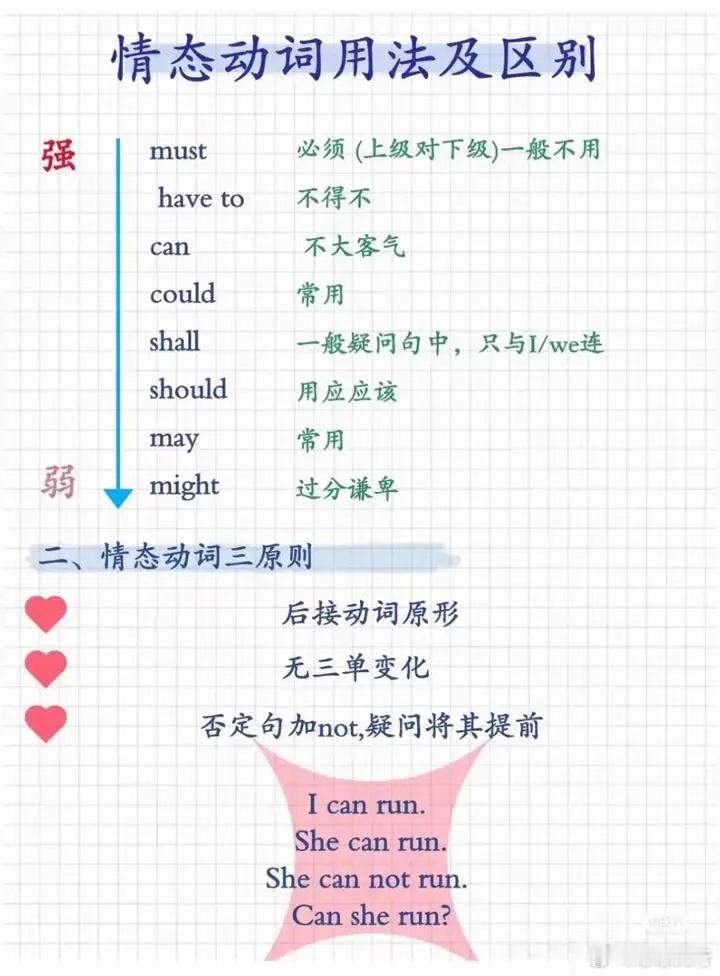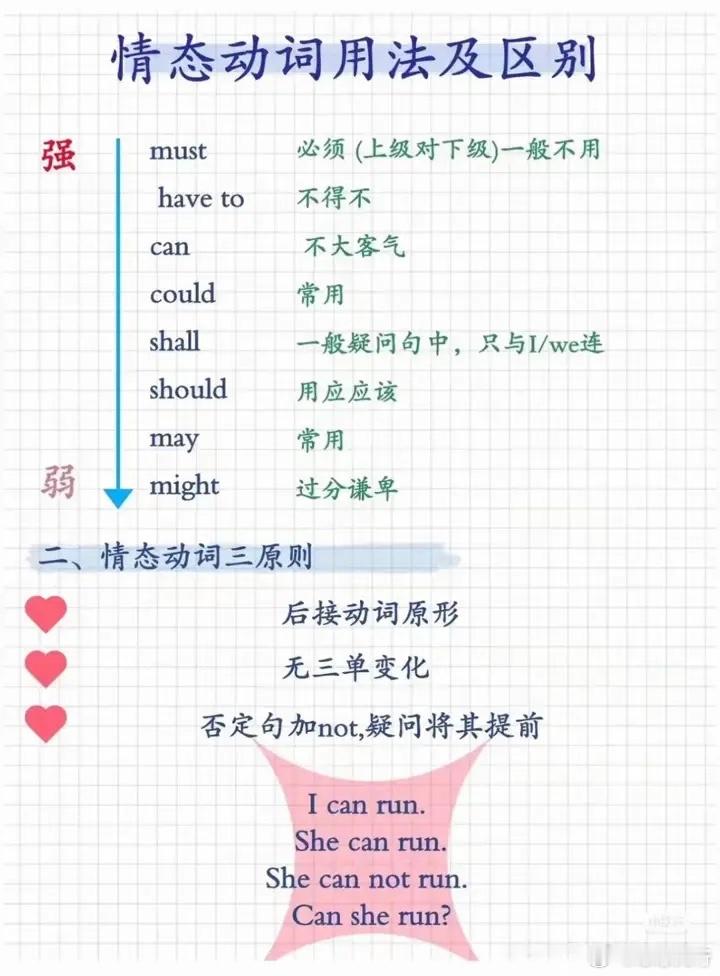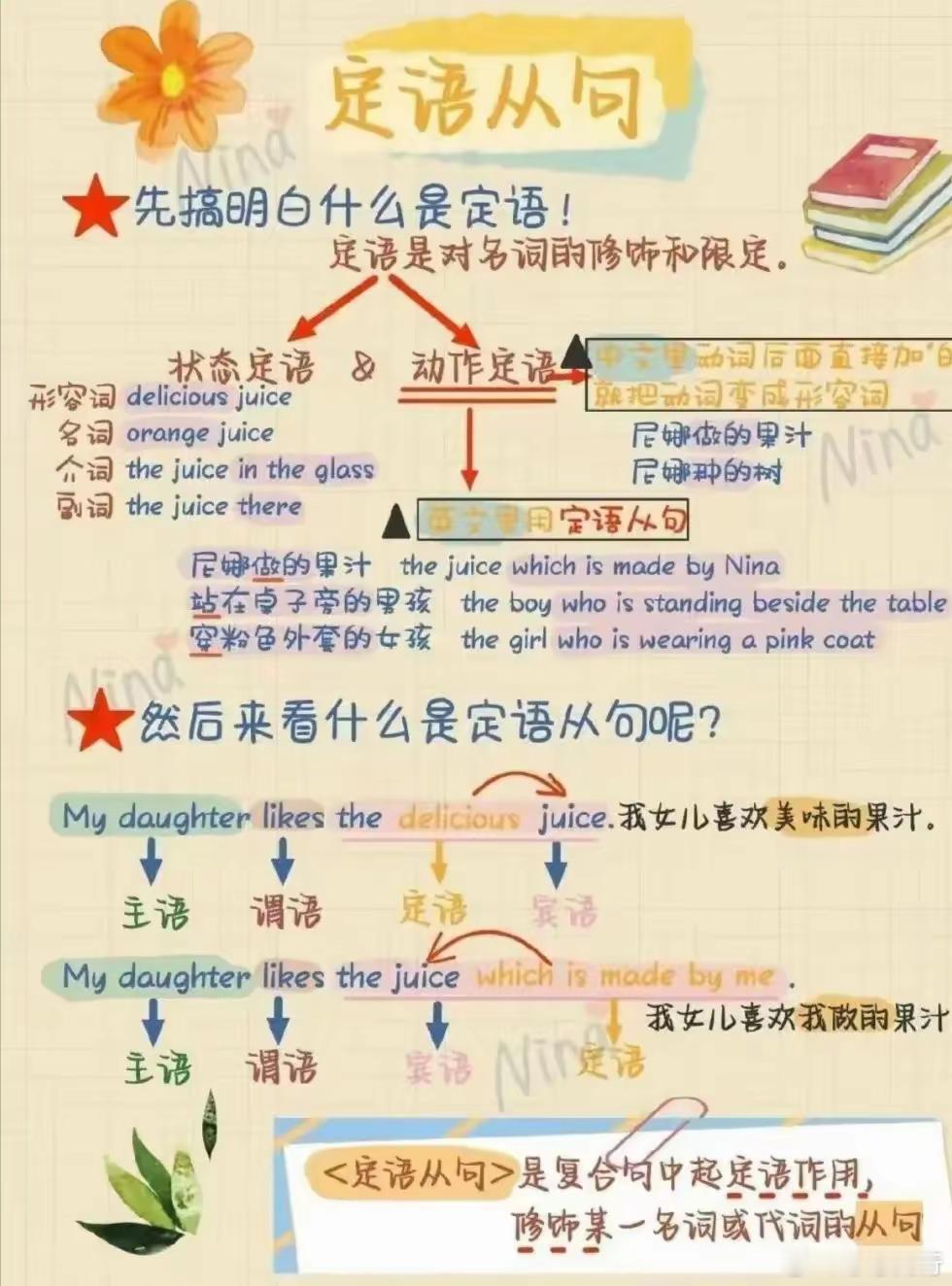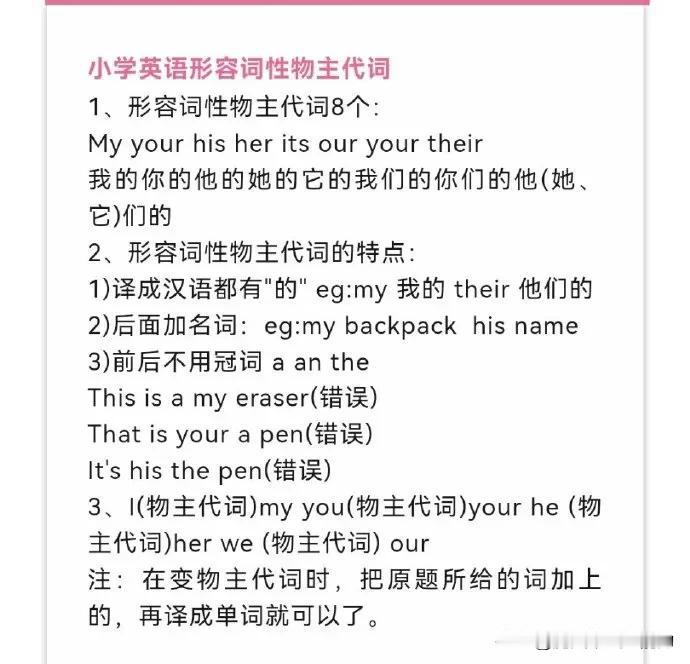掌握情态动词用法,提升英语表达能力!
·本身具有词义,但不能独立作谓语,需要与动词原形一起构表示说话人对某一动作或状态的态度。
·can表示能力(相当于be ableto)、许可(could表示过去的能力(can的过去式)。
·may表示允许或征求对方许可。
·must表示必须、应该。
·ought表示应该(相当should.,但语气比shall用于征求对方的意见。
·should表示建议或推测必须(上级对下级)一般不用。一般疑问句中只与1/we连否定句加not,疑问将其提前。
·No,you can't/ mustn't.Close the window.(动词原形+其他)OK,I will.
·maybe和may be的区别。
·否定前+don't/doesn't/didn't。
·may /might/could(be)可能(是)。She must be at home ,because I called her just now.She may go outside .I'm not sure.
·肯定:ought to do=should do应该做某事。
·否定:ought not to do=shouldn'tdo不应该做某事。
·一般疑问句:Oughtsb.to do…·.=Should sb.do.…·.?…·应该做·…吗?
·can习惯用法。情态动词后表现在时和将来时,是用动词原形do。后表过去时,用完成have done。He must be at home now.He must be at school tomorrow.(将来)。He must have come yesterday.needn't have done.本不能做(却做了)虚拟。
·-Dad,I have a toothache.-You shouldn't have eaten candy.
·can't but do sth.只好做某事。be used to doing习惯于做…









